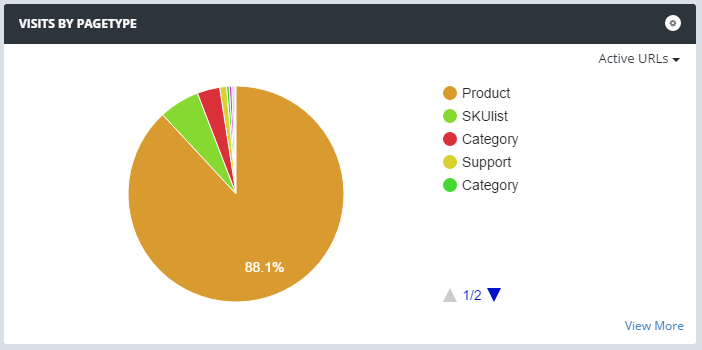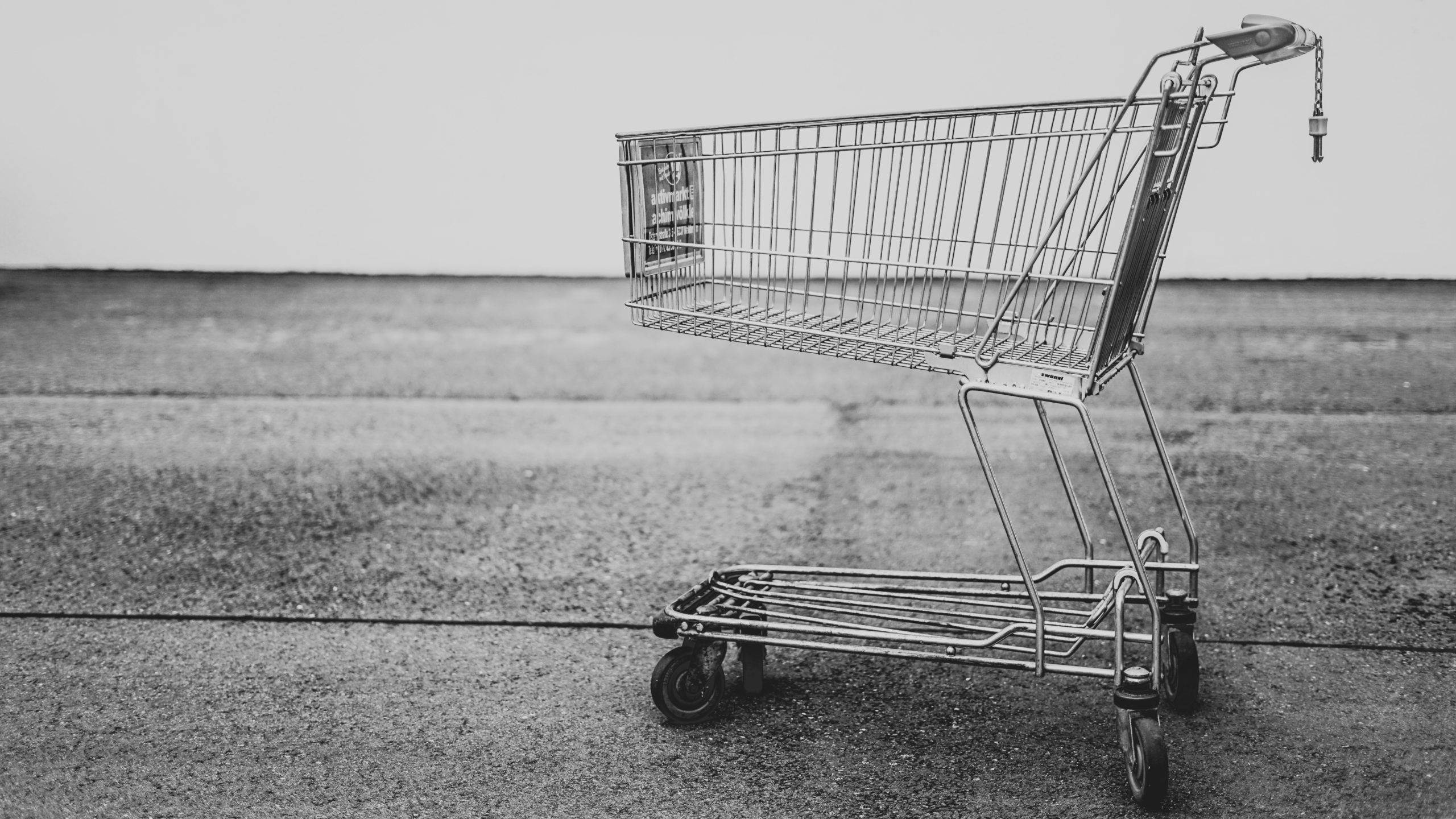Product page SEO is the process of optimizing product page elements like product descriptions and images so that they perform well in search engines.
E-commerce SEOs know that product pages present unique challenges that other page types like blog posts do not, prompting questions such as:
- Is using the manufacturer’s description considered duplicate content?
- Should I delete pages for out-of-stock products or keep them to preserve the traffic?
- Will my faceted navigation cause URL issues?
Google does give some insight into what they consider a high-quality product page in their quality rater guidelines:
High quality shopping content should allow users to find the products they want and to purchase the products easily… the pages should have satisfying customer service information.
And they also list examples such as this stand mixer product page from Target and this GPS product page on NewEgg.com.
But sometimes, it’s nice to have a cheat sheet, which is why we put together a list of SEO best practices for each of the main elements on e-commerce product pages.
Picking an e-commerce URL structure
The product URL itself can play a role in how the page performs in search engines. Not only is the URL a factor in determining a page’s relevance, but the URL can also affect how many people click on it in search results, directly affecting traffic to your product pages.
Product URL best practices:
- Many product page URLs are just a long string of numbers and letters. Turning these into clean, human-readable URLs can result in more organic search traffic.


- Many e-commerce websites use faceted navigations to help visitors sort & filter to find the product they’re looking for. Make sure you control crawling of these endless facets with your robots.txt file and avoid linking to these non-canonical versions of your URLs internally.


Pro tip! Botify allows you to flag certain sections of your site (like parameters resulting from your faceted navigation) and we’ll alert you if Google starts crawling them.
Botify also has a report that shows you internal links to non-canonical pages, which can help you detect if you’re linking to the parameter version of your product page URLs.
Product Page Title Tags
In many ways, title tag optimization is the same for product pages as it is for any other page:
- Make sure there’s only one title tag per page and it’s in the head tag
- Keep title tags around 60 characters
- Use descriptive words and branding
But there are some added considerations e-commerce SEOs might want to take when it comes to optimizing their product page title tags:
- Learn how shoppers are searching for your products and use that phrasing to write your product page title tags. Botify Keywords is great for this.
- Google also says that, for many larger sites, handwritten title tags can be impossible, so you can programmatically generate them. Just make sure they are human-readable and unique.
Pro tip! Botify has reports to help you optimize the title tags on your product pages. Find pages with missing title tags, incorrect length, or even connect your data to see how your title tags may be affecting SEO performance.
Meta Descriptions for Product Pages
While not a ranking factor, your product page meta descriptions can affect your click-through rate. Since these snippets can directly influence how much organic traffic you get to your revenue-driving pages, they’re important to optimize.
- Keep between 150-160 characters
- Use your description to sell your product! Treat it like a call-to-action .
- Like title tags, a programmatic solution may be best for generating meta descriptions on large websites
Pro tip! Just as with title tags, Botify has reports to alert you to missing descriptions, descriptions that are too long or too short, and the impact of your descriptions on organic performance.
Heading Tags
Heading tags (
- Google has said that using multiple
tags won’t harm your SEO, but it’s a good idea to reserve a single
for your most important heading, like the product name. - It’s not necessary to use heading tags in order, according to Google.
- Use keyword research to inform your heading tags. Find out how people are searching for your products and use their language.
Pro tip! Botify not only shows you the basic HTML tags of your pages, but it also gives the full raw HTML code and notes the presence, absence, or duplication of certain HTML tags, like heading tags.
Product Description
Remember Google’s example of a high-quality product page from their quality rater guidelines? Here’s what that can teach us about product descriptions for SEO!
- Product descriptions should be written to sell the product, so use this content as an opportunity to call out key features and benefits in as unique a way possible.
- Write about your product using the words that your potential customers are using to search for them. Again, RealKeywords is great for this.
- In the example of the stand mixer from the quality rater guidelines, Google says that the page is high quality because it “provides the manufacturer’s product specs as well as the original product information.”
- Include content about shipping and returns information.
- It’s OK to use tabbed content to organize product description content.
Pro tip! Use Botify’s content quality tools to find thin product pages and see if low word count is contributing to high bounce rate or low session duration. You can even view product pages by how much unique content they have compared to template content.
Images
At best, images can help sell your product. At worst, they can cause bloat that slows down page speed. Here’s how to optimize your product page images.
- Google recommends featuring multiple images of the product
- Speed is a ranking factor on mobile and desktop, so appropriately size and compress all your images (including thumbnails!)
- Use high-quality images that present your products in their best light
- Add descriptive alt text
- Use descriptive image file naming
Pro tip! Page speed can influence how often your product pages are visiting and how well they rank, which is why Botify has reports that combine visits with technical SEO metrics so you can view things like visits by page load. This allows you to get insight into how speed might be affecting your organic traffic.
Structured Data
Structured data helps Google understand your pages better. It can even enable rich snippets on your product URLs in search results.


- E-commerce websites can use product markup to display information like price, availability, and ratings in Google and Google Image results.
- Utilize review markup and your products could display review stars next to your product URLs in search results.
- Google says that the highest quality product pages feature many reviews from real buyers.
Pro tip! Botify makes it easy to make sure your product pages have product schema by allowing you to view your website’s structured data distribution by segment. You can also use Botify to find products based on their ratings or compare the performance of products based on their review star ratings.
Out of Stock Products
E-commerce SEOs face the unique challenge of product expiration – what do they do with their product URLs when those products go out of stock? Here are a few options.
- If the product page is ranking and bringing in substantial traffic, keep it and display an “item not available” message. Link to related products if available or provide an “email me when this product is back in stock” option.
- If the product is out of stock and there’s a similar product, you could 301 redirect the URL. Just make sure to avoid redirecting to irrelevant pages.
- If the product is permanently out of stock and there’s no relevant content to redirect visitors to, you could delete the page without performing a redirect. Just make sure your 404 page does a good job of keeping visitors on your website by, for example, including a search bar or links to helpful content. Keep in mind that you’ll lose any of the SEO benefits that URL was bringing your site.
How to manage product page SEO at scale
Now you know how to optimize your product pages, but are you sure Google actually knows about all of them? Through our research, we’ve found that Google is missing nearly half of all pages on enterprise websites. Because they’re not crawled, they’re not being indexed, and if they’re not in the index, searchers can’t find them. This means countless retailers are leaving money on the table.
Product page SEO is hard to scale unless you have an enterprise software solution, and we’re here to help. Botify helps retailers drive increased and sustainable revenue to their e-commerce websites. If you want to start making your product pages work for you, reach out and we’ll show you everything our platform has to offer!







